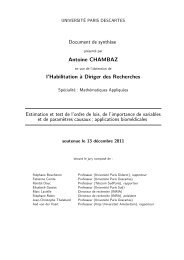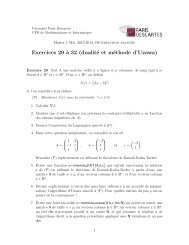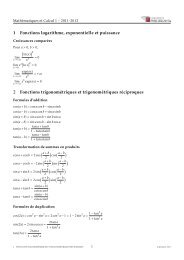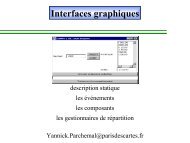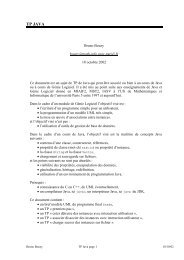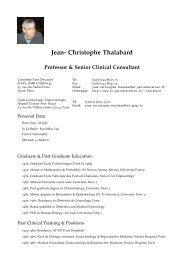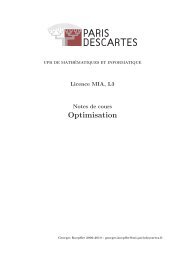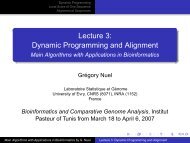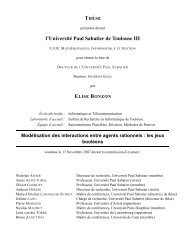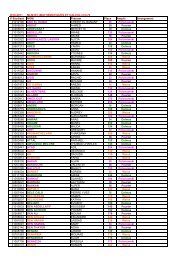Use of power law models in detecting region of interest
Use of power law models in detecting region of interest
Use of power law models in detecting region of interest
You also want an ePaper? Increase the reach of your titles
YUMPU automatically turns print PDFs into web optimized ePapers that Google loves.
2526 Y. Caron et al. / Pattern Recognition 40 (2007) 2521–2529Fig. 7. In (a) <strong>region</strong> <strong>of</strong> <strong>in</strong>terest extracted us<strong>in</strong>g Zipf <strong>law</strong>, <strong>in</strong> (b) the sub-images are figured <strong>in</strong> the representation space with the cluster<strong>in</strong>g <strong>in</strong> two classes ROIand background.aOrig<strong>in</strong>al imagebnumber <strong>of</strong> patterns occurr<strong>in</strong>g onceslope <strong>of</strong> <strong>in</strong>verse Zipf plotFig. 8. Region <strong>of</strong> <strong>in</strong>terest detection <strong>in</strong>dicated <strong>in</strong> (a) us<strong>in</strong>g <strong>in</strong>verse Zipf <strong>law</strong>.The representation <strong>of</strong> the sub-images is figured <strong>in</strong> (b) where the cluster<strong>in</strong>gis shown.largest connected component <strong>of</strong> the sub-images represented bypo<strong>in</strong>ts situated above the centre <strong>of</strong> gravity <strong>of</strong> the cluster. If theROI conta<strong>in</strong>s holes, as with Zipf <strong>law</strong>, they can be filled by<strong>in</strong>clud<strong>in</strong>g the sub-images with all neighbours already belong<strong>in</strong>gto the <strong>region</strong>. The discrim<strong>in</strong>ation between the two classes canbe adjusted dynamically <strong>in</strong> order to ma<strong>in</strong>ta<strong>in</strong> the surface <strong>of</strong> theFig. 9. Detection <strong>of</strong> an object more uniform than the background <strong>in</strong> (a) therepresentation <strong>of</strong> the sub-images is figured <strong>in</strong> (b) where the cluster<strong>in</strong>g isshown.ROI between 20% and 50% <strong>of</strong> the total area <strong>of</strong> the image. Anexample <strong>of</strong> ROI detected us<strong>in</strong>g this method is shown <strong>in</strong> Fig. 8.The blue area <strong>in</strong> this case seems too large.Unlike <strong>in</strong> the previous case, the ROI consists <strong>of</strong> a moreuniform object on a textured background. It is still possible todetect the ROI us<strong>in</strong>g the same method and detect<strong>in</strong>g the case<strong>in</strong> an automatic way. This case occurs if more than 50% <strong>of</strong> the




